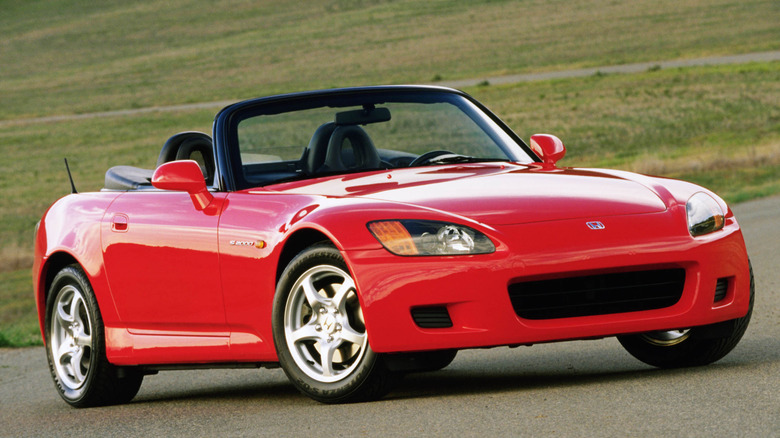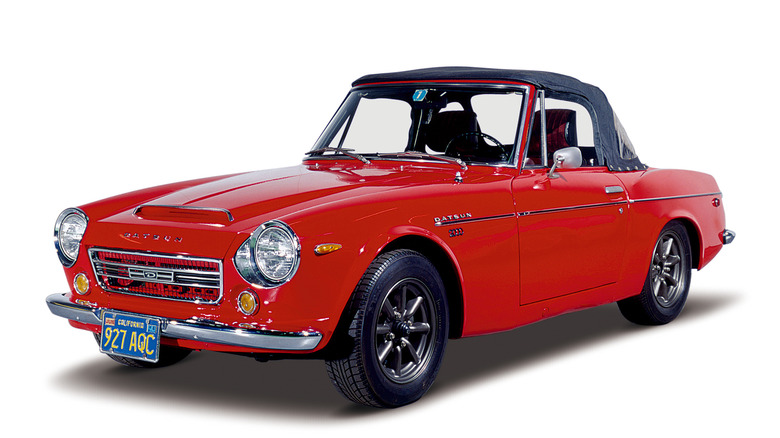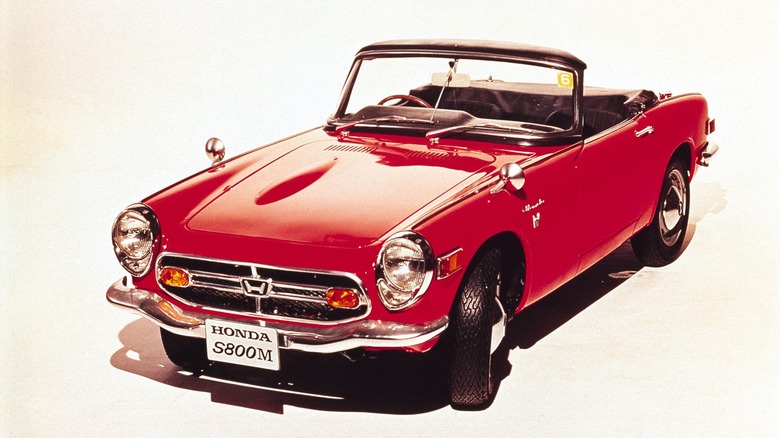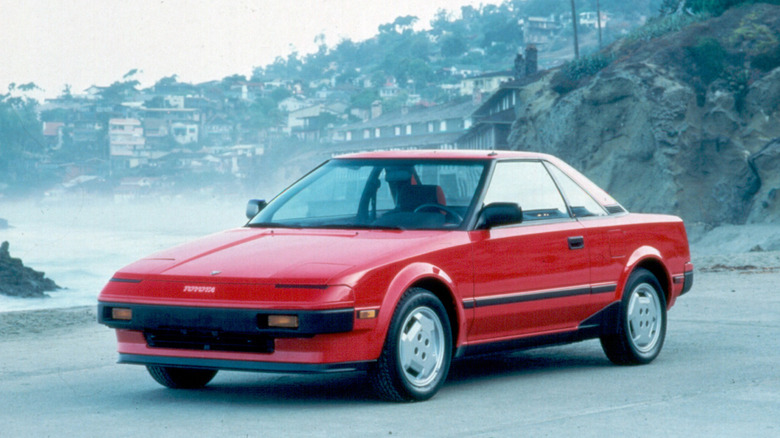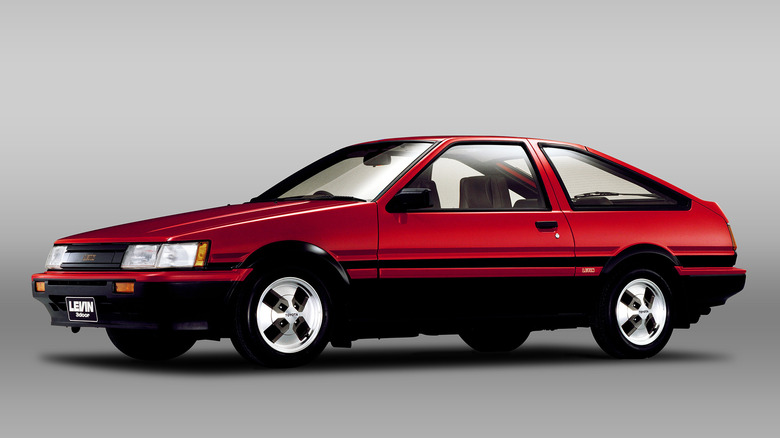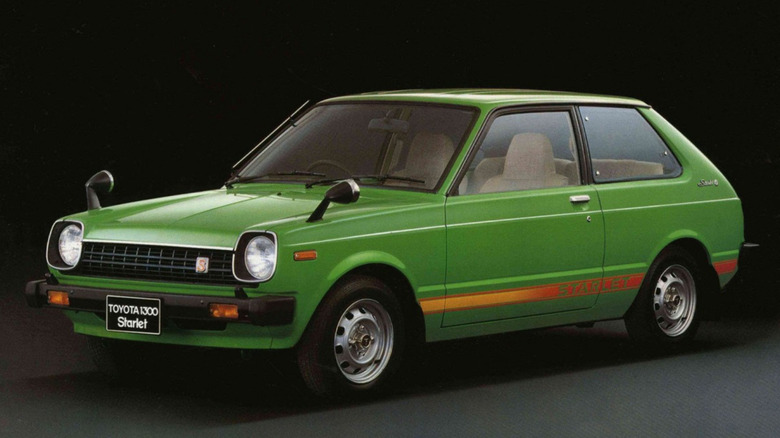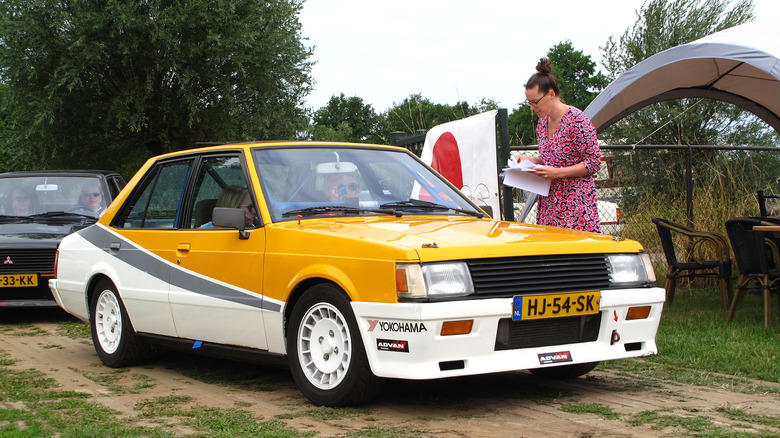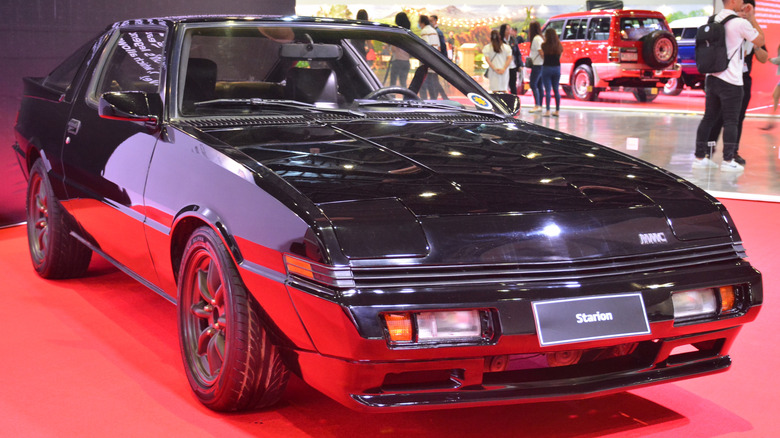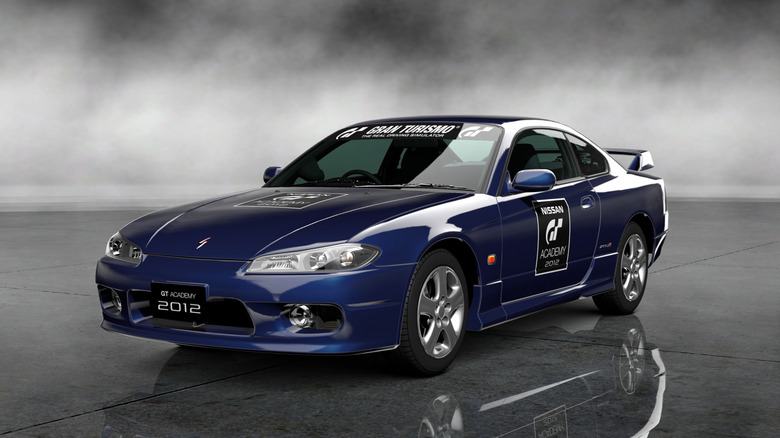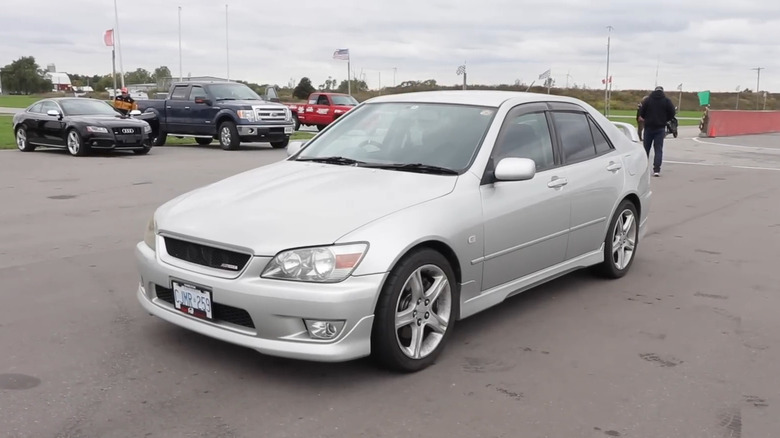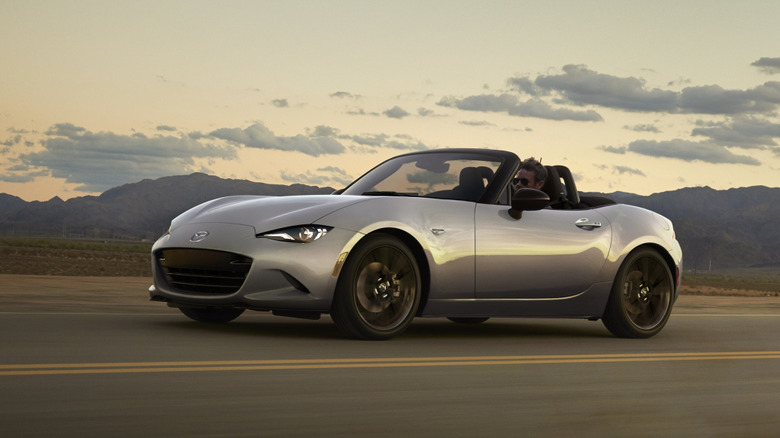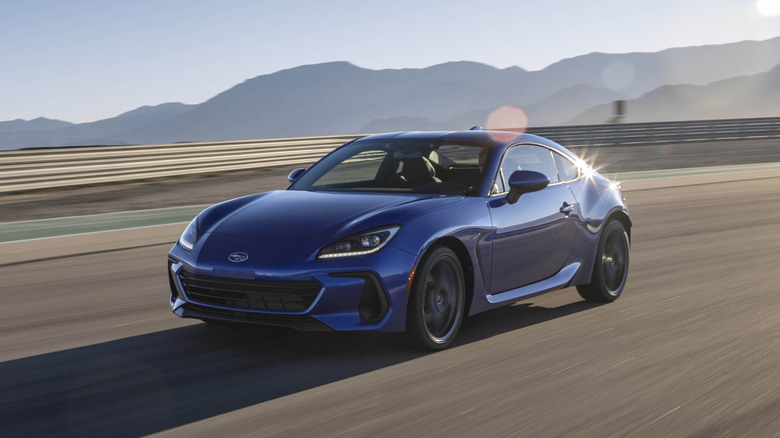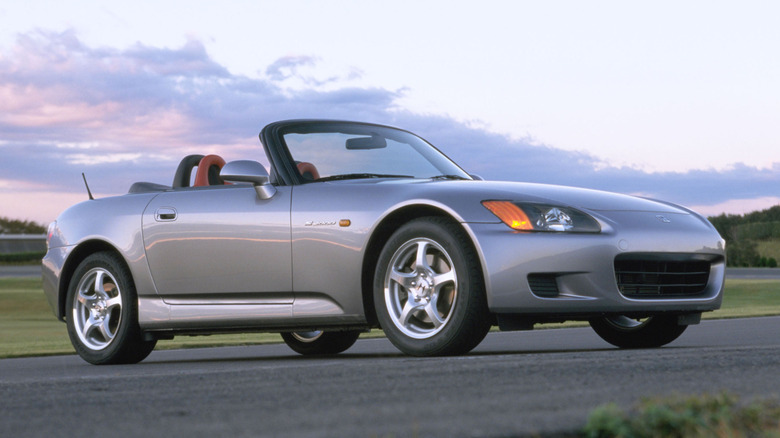12 Iconic JDM Cars With 4-Cylinder Power And Rear Wheel Drive
We all love a big, stomping V8 sending all its eight-cylinder glory to the rear wheels. Burnouts. Deafening roars. The smell of rubber and gasoline. It's all there. Yet, for most enthusiasts, buying, feeding, and preserving a V8 is unattainable. Yes, there was a time in history when V8s could be afforded by most, but today, it's a different story.
However, this article isn't about weeping for something that we don't have. It's about engine positivity. Yes, cutting a whole cylinder bank from a V8 might be a sacrilege to some, especially in rear-wheel-drive sports cars. Still, well-engineered four-cylinder machines connected to the rear wheels can put a big grin on your face. The smell of rubber and gas will be there, too. Good noises? You bet!
Four-cylinder, rear-wheel-drive cars are plentiful throughout history, but nobody perfected the recipe better than Japan. I've been following the industry for a long time and got to drive many affordable four-cylinder sports cars, and Japanese vehicles have always left a lasting impression. So, in this piece, we would like to share with you some of the most iconic four-cylinder JDM cars that drive the rear wheels. To keep it fair, we've included only one model per nameplate. Enjoy!
Datsun 2000 Sports Roadster (1967 to 1970)
Datsun proved that four cylinders and rear-wheel drive can give you an exhilarating drive decades ago. It started with the 1965 Datsun Fairlady 1500, which featured a 79 hp 1.5-liter engine under the hood. Three years later, though, Datsun implemented stronger engines in the roadster — the smaller 1.6-liter unit made 89 hp, while the 2.0-liter motor produced 143 hp.
Both were fun to drive, but the more potent unit was on another level regarding performance. Codenamed U20, the 2.0-liter engine was very advanced for its era, too. Twin SOLEX carburetors. OHC. A high 9.5:1 compression ratio. Crucially, it was tasked with moving 2,000 pounds, so as you could imagine, acceleration was brisk, with 60 mph arriving in 9.3 seconds. The top speed of almost 130 mph was quite astonishing for the 1960s, too, especially for a Datsun-produced sports car. Heck, it was the fastest JDM car during its production span.
Yet the numbers were only half the story. Later versions of the 2000 Sports Roadster also had a five-speed manual with Porsche-type synchromesh, and front disc brakes to bring you to a halt on time. A torque rod rear suspension took care of the handling. The engine sounded quite angry, too, adding to the experience. Sure, the inline-6 in the popular 240Z sounded better, but it couldn't match the top speed of the 2000 Sport Roadster.
Honda S800 (1966 to 1970)
After making motorcycles for 15 years, Honda finally dipped its toes in the automotive industry in 1963. You could say the company arrived with a bang, as its first-ever passenger vehicle was a sports car. The S500 was a unique car, borrowing mechanical parts from the brand's motorcycles. This meant it had a 44 hp, 531cc four-cylinder engine, which revved to 9,500 rpm! Yup, a figure so high, that it was only beaten recently by exotics like the GMA T.50 and Aston Martin Valkyrie.
Honda continued to push the envelope, though, and in 1964 introduced the S600, which had a larger 606cc engine producing 57 hp. It all culminated with the 1966 S800, powered by a 791cc engine equipped with four individual carburetors. The largest unit produced 70 hp and 48 lb-ft of torque — outstanding for such a small naturally aspirated unit. As a result, it could reach 60 mph in 13.4 seconds and a top speed of 94 mph.
Still, the S800 was all about the driving experience. Notably, Honda connected the rear wheels to the four-speed manual transmission with chains, allowing for a completely independent suspension — just like in motorcycles. The S800 weighed only 1,587 pounds, too. The engine's redline was slightly lower at 8,500 rpm, but that's still high enough, right? As you can imagine, it was, and still is, a blast to drive.
Toyota MR2 AW11 (1984 to 1989)
Want a new mid-engine car? Unfortunately, unless you have seven figures in your bank account, options are currently quite limited. Yet in 1984, buyers could try supercar-like driving dynamics in the first-ever MR2. An affordable mid-engine car, the AW11 MR2 costs just $10,999 when new, or around $32,000 after adjusting for inflation. Sheesh.
Toyota made sure its first mid-engine car had everything it needed to succeed. Curb weight was around 2,150 pounds. Rear-wheel drive. A sharp, wedgy design that screams mini supercar. In the middle, a high-revving 1.6-liter engine that produced up to 120 hp. However, this wasn't just any engine — it was the mythical 4A-GE that powered many Toyota sports cars. The result was a quick zero to 60 time of 8.1 seconds and a top speed of 124 mph. Need more? MR2s were later available with the supercharged 4A-GZE engine. With 145 hp and 140 lb-ft of torque, the boosted engine catapulted the MR2 to 60 in just 6.5 seconds. In the 1980s, this was rocket-ship fast.
Yet the first MR2 wasn't only about the speed — experience took center stage here. The balanced handling, courtesy of its mid-engine/rear-wheel drive layout, and a slick-shifting five-speed manual gave you all the excitement you ever needed. The raging sound of the twin-cam 4A-GE was the cherry on top. Sadly, the MR2 was discontinued, but a new model with the 1.6-liter three-cylinder from the GR Yaris might be on the horizon.
Toyota AE86 (1983 to 1987)
Toyota was on fire in the 1980s. If you didn't fancy a mid-engine sports car, dealers could also steer you to the Corolla GT-S. A Corolla? Yes, but not just any Corolla — this was the JDM legend AE86. The GT-S was around a grand cheaper than the MR2, yet had the same 4A-GE engine under the hood. In North America, it was rated at 112 hp, but overseas, it made 128 hp. Depending on the region, the AE86 also weighed as little as 1,995 pounds. Not bad for a cheap four-cylinder Corolla from the 1980s!
Impressed yet? Not so fast, because the balanced rear-wheel-drive platform is what made the AE86 famous. That, and Keiichi Tsuchiya. This legendary race driver wasn't only racing for glory, but also for fun. He is most famous for drifting around corners. This driving style, which he showed off with the AE86, quickly got its admirers in the automotive world. It also showed that affordable cars can be exciting.
There is even an anime where certain Takumi Fujiwara raced and drifted a Toyota Sprinter Trueno GT-APEX (AE86) while delivering tofu. It's called "Initial D" and it fortified the AE86's place in the pantheon of greats. So, yeah, drifting and the racing anime genre are directly related to a rear-wheel-drive econobox. Only today, these things can set you back north of $25,000.
Toyota Starlet KP61 (1978 to 1984)
If you are interested in a lightweight, rear-wheel-drive JDM machine but the AE86 is too expensive for you, consider the KP61 Starlet. One of the last city cars on an RWD platform, the second-gen Starlet offered a unique proposition by also having a very short wheelbase of 90.55 inches. Add to that a 1,687-pound curb weight, and there is your recipe for driving fun.
Okay, the 1.3-liter engine was a bit lacking in the horsepower department, but the Starlet was all about cornering. Toyota even equipped it with rack-and-pinion steering, front disc brakes, four-link coil springs on the back axle, and a five-speed manual. No wonder, the KP61 Starlet quickly became a hidden gem for financially challenged young enthusiasts.
Today, though, the Starlet KP61 is seen as an excellent project car. Many Toyota engines can be adapted to work on the tiny city car, including powerhouses like the 2.0-liter 3S-GE engine from the second-gen MR2. Some have even put a YB Cosworth engine with 440 hp! Do a rear-seat delete and some other weight-reduction practices, and the Starlet KP61 will enter the crazy territory. Seriously, there are very few other RWD front-engine hatchbacks with such a short wheelbase.
Mitsubishi Lancer EX 2000 Turbo (1981 to 1987)
The Lancer EX 2000 Turbo is another forgotten JDM gem, but one that has all the ingredients to earn a place among the legends. You must be now thinking — hey, wasn't the Lancer an AWD rally homologation special? Not this one. It was indeed a homologation special for the World Rally Championship, but its engine only powered the rear wheels. The EX 2000 Turbo didn't have a very successful, because shortly after its arrival, the Audi Quattro AWD entered the scene and demolished everyone.
In rally, AWD makes a difference, especially on low-traction surfaces. On the road, though, one might argue that rear-wheel drive is the king. Pair that with a lightweight 2,260-pound curb weight and a five-speed manual, and excitement is guaranteed. However, the engine was even more special. The Lancer EX 2000 Turbo was equipped with the legendary 4G63, an improved version of which was later used in the Lancer Evolution I through IX.
In the EX 2000 Turbo, the carbureted 2.0-liter inline-4 turbo made 168 hp and 180 lb-ft of torque, enough for a zero to 62 mph sprint of 7.8 seconds, while the top speed was a respectable 124 mph. In 1981, these were some exhilarating numbers for a four-door family saloon. Beyond that, the 4G63 is a tuning-happy engine, so you can easily bring the EX 2000 Turbo to modern acceleration figures.
[Featured image by Rutger van der Maar via Wikimedia Commons | Cropped and scaled | CC BY 2.0]
Mitsubishi Starion (1982 to 1991)
Want some of that 4G63 magic but in a more appealing coupe body? Enter the Mitsubishi Starion. As a rear-wheel-drive 2+2 coupe, the Starion does give off Porsche 944 vibes, albeit with a more striking, angular approach. Crucially, its looks are matched by excellent performance. Initially available with a 170 hp tune of the 2.0-liter turbocharged 4G63 engine, the Starion reached 60 mph in just 7.5 seconds. The Porsche 944? Over eight seconds. With performance like that, Mitsubishi had a winner on their hands.
Of course, the Japanese manufacturer didn't stand still, and in 1985 it introduced a 180 hp version with an intercooler. The intercooled 4G63 made way more torque at 214 lb-ft over 181 lb-ft, and cut the zero to 60 acceleration time to seven seconds. Top speed? 143 mph versus 135 mph. The improved Starion was also equipped with a limited-slip differential and remained relatively light at around 2,800 pounds. During the last two years of its lifespan, the Starion was equipped with a larger 2.6-liter inline-four turbo, but it produced only 155 hp. Why the performance drop? Mitsubishi had to add a catalytic converter.
The most attractive Starion, though, is the widebody version. With a 50mm wider stance and a much more aggressive design, the wider variant was also more stable and predictable during cornering. The wider body did cost the Starion some straight-line performance, though, particularly at the top end.
Nissan Silvia S15 (1999 to 2002)
Unlike the Lancer EX 2000 Turbo, the Nissan Silvia is a known quantity in the JDM world. An affordable and relatively simple sports coupe, the Silvia quickly caught the attention with its balanced RWD S-chassis and stout SR20DET engine. The model is also known as the 180SX, 200SX, or 240SX, depending on the market.
Still, the Silvia name, used in Japan, caught up because those versions got the legendary four-cylinder engine. The fastest one was the latest Silvia S15 Spec-R Aero, where the 2.0-liter turbocharged SR20DET made 247 hp and 203 lb-ft of torque. Paired with a six-speed manual, the lightweight coupe (2,734 pounds) sprinted to 60 mph in 5.4 seconds and could achieve 165 mph without the speed governor.
Don't get too carried away, though, because that wasn't the most impressive part of the Silvia S15. This car was all about the handling. Balanced and with beautiful adjustability, the Silvia could always follow the driver's wishes. Want a more clinical, track-day approach? Piece of cake. Drifting? Easy peasy. Indeed, the excellent driving dynamics of the Silvia made it a darling among the drift crowd. The tunability of the SR20DET further played into Silvia's success. Heck, it may have even trumped the AE86 as the poster child of the sport!
Toyota Altezza RS200 (1998 to 2001)
Remember the first-gen Lexus IS? A compact sports sedan with two inline-six engines on offer, it was a thorn in the eye of BMW and its 3 Series. Yet, as is often the case, Japan got the best version, albeit with a Toyota badge and the Altezza RS200 nameplate. Of course, it also had a four-cylinder engine, and quite an astonishing one at that.
Like most Toyota engines from the 1990s, the 3S-GE was an over-engineered 2.0-liter unit. It had things such as titanium valves and pistons, and the company's advanced BEAMS (Breakthrough Engine with Advanced Mechanism System) technology with Dual-VVTi. As a result, the most powerful Blacktop variant produced 207 hp at 7,600 rpm and 160 lb-ft of torque at 6,400. It sounded angry, too, especially when you hit the 8,000 rpm redline.
Sure, at 211 hp the Altezza RS200 might have been slightly down on power to the Lexus IS300, but it had way more character. It was also available with a six-speed manual — just the right transmission for a rear-wheel-drive sports sedan. Besides, the Altezza RS200 was the brainchild of Nobuaki Katayama, the legendary engineer behind the AE86. Thus, it was sharp and fun to drive around corners. Unsurprisingly, just like the Silvia, the great engine and chassis combo immortalized the Altezza RS200 as one of the best drift and time-attack cars.
Mazda MX-5 Miata ND (2016 to Present)
The MX-5 Miata is one of the biggest 1990s JDM success stories. Simple and affordable, Mazda's sports car brought the fun-to-drive aura to the masses. Ever since the first generation launched in 1989, the MX-5 Miata remained an enticing proposition for enthusiasts on a shoestring budget.
However, this wasn't just because of its price. The MX-5 remains true to its roots even today, never chasing high-horsepower numbers. The current ND generation is also barely heavier than the first model introduced in 1989, despite carrying a much more powerful engine. For that reason, we think it will go down as one of the most iconic editions of the Miata, though any MX-5 generation is legendary in its own right.
To put it bluntly, the ND MX-5 Miata is a recipe for happiness. It drives sweetly through any corner, with poise and balance that's unmatched in cars double the price. Not only that, but the MX-5 communicates every aspect of the drive with you, something that's mostly gone today. Despite having a relatively small naturally aspirated, 181 hp 2.0-liter engine, it's relatively quick, too. Zero to 60 takes less than six seconds. You also get to play with a fantastic six-speed stick shift, which makes all the sense in a lightweight roadster. Heck, it can even go topless to make everything even more exciting –not that it needs to!
Toyota GR 86/Subaru BRZ (2021 to Present)
What the MX-5 is to the roadster world, the GR 86 and BRZ are to the coupe world. Similar in approach to their JDM rival, the Toyota and Subaru co-developed sports cars made a stir in 2012, when the first-gen models were launched. The recipe was simple, though nobody in the automotive industry followed it. Rear-wheel-drive. Balanced, flickable chassis. A naturally aspirated, four-cylinder boxer engine. Manual transmission, with an optional automatic. The MX-5 finally got the rival it deserved.
In 2021, Toyota and Subaru launched the second-gen models. The affordable sports car project was a success, and now the cries for more power were addressed without changing the original recipe much. So, instead of a 2.0-liter engine — producing 205 hp and 156 lb-ft — the GR 86 and BRZ now have a larger 2.4-liter unit producing 228 hp and way more torque at 184 lb-ft. Thus, the pair now sprints to 60 mph in well under six seconds.
When we drove the Subaru BRZ last year, we learned that the fun doesn't end there. Acceleration is only a small part of the story. The GR 86 and BRZ twins feel light on their feet, because weighing only 2,833 pounds, they truly are. Moreover, their engaging and balanced handling with little body roll puts more expensive sports cars to shame. The excellent six-speed manual and communicative steering are the finishing touches that make the GR 86 and BRZ some of the best sports cars for twisty roads, period.
Honda S2000 (1999 to 2009)
The S2000 is already a legend in the automotive world. A spiritual successor to the S800, Honda's last rear-wheel-drive roadster remains one of the best driver's cars. Just like with its predecessors, the S2000 was all about the engine. In this case, though, it wasn't sourced from a Honda motorcycle, though its demeanor was similar.
With 234 hp extracted from only a 2.0-liter capacity, VTEC magic, and a 9,000 rpm redline, the F20C is truly something special. When the VTEC kicks in at just below 6,000 rpm, the F20C brings pure ecstasy to the driver. Oh, and you could flirt with the redline all day long, without worrying the engine would break down.
Yet, some people in North America thought the S2000 lacked torque, so in 2004, Honda equipped its roadster with a 2.2-liter F22C1 engine. The new unit produced 242 hp and 163 lb-ft of torque, though the rev limiter arrived 1,000 revolutions sooner. Bummer. Hey, but this means you now have the option of a higher-revving or a torquier engine!
Whichever S2000 you choose, be prepared to be amazed by the poise and balance of the chassis. The stick-shift mechanism is one of the best the automotive world has ever produced. Yes, the steering was a bit numb, but as a package, this high-revving, rear-wheel-drive wonder is hard to beat. Hardly surprising, a clean S2000s can cost an arm and a leg today.
